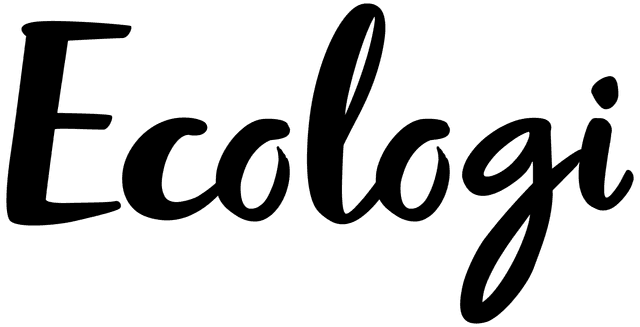Brand Storytelling: Ensuring Your Message Cuts Through the Noise
)
By Martyn McDermott
12 min read
)
The web can be a bit intrusive, can't it?
Sites we regularly visit demand our attention, often towards seven things at once. But as repeated research has shown, our brains just aren't wired to work like that.
So with that in mind, how do you make sure your message is heard through the noise?
Well, it's not by shouting louder than the rest; according to Learn Hub, 82% of surveyees "hate" website pop-ups.
Nope, it's about telling an unforgettable tale instead. Because according to research (as reported by Buffer), stories activate parts of the brain that other forms of communication don't.
So, it only makes sense that customers would resonate with brands that spin the best yarns - right?
Welcome to the world of brand storytelling.
"Marketing is no longer about the stuff that you make, but about the stories that you tell."
Seth Godin
A quick synopsis of brand storytelling
In short, brand storytelling is the art of creating and communicating a narrative to users. This brand narrative is the 'story' of what you do and, most importantly, why people should care.
The great ones find a way to connect with their target audience. More than that, they entice and allure their customers in the journey until they've fallen in love with it.
But what separates you from the rest?
Well, the good thing is that every business has a story to tell.
Often it's made up of some background event, the proposition/people behind it and their shared mission. In fact, In The Seven Basic Plots: Why We Tell Stories, Christopher Booker argues that every story we read or watch is simply a variation of an age-old narrative.
Booker's seven stories are:
Overcoming the Monster
This is an underdog story where the hero sets out with courage and strength to destroy a much larger evil. This one's perfect for challenger brands like Monzo.
The Quest
An epic journey that could take forever; one where the protagonist won't stop until they've completed their mission. Think of a brand like LinkedIn and its mission to create universal, economic opportunities for everyone.
Voyage and Return
Unlike The Quest, this tale's about venturing into the unknown and coming back (usually changed). This story is perfect for brands offering a temporary escape, e.g. Expedia or Airbnb
Comedy
This 'story' might be a rare choice for brands - but they are out there. Take Cards Against Humanity and its tongue-in-cheek marketing campaigns, for example.
Tragedy
Often a self-deprecating tale where the protagonist is brought down by their own flaws. Brands that use this one often call themselves out or, jokingly, prophesize their own demise. Just think about how Hinge positions itself: the dating app "Designed to be Deleted"
Rags to Riches
Here, our protagonist gains something they've been lacking. In film and literature, it's usually wealth - but it could be mastery or enlightenment for brands. This one works well for the classic 'entrepreneurial tale', e.g. Innocent
Rebirth
This one's about our protagonist changing their ways and improving in some way. A classic example is Skoda but more recently there's also Carlsberg and its 'Piss to Pilsner' campaign.
Booker would argue that aligning yourself with one of these tales - as long as it's true to your brand - will give your comms and creative a consistent narrative thread going forward. That's because these plots are so ingrained in our makeup, told and retold over generations of storytelling, that we instantly 'click' with them.
But even if you don't subscribe to this theory, think about some of the brands you love and ask yourself: What is it about them that makes you feel so connected to them?
Is it their mission?
Their values?
Or the way they treat you as a customer?
Well, whatever it is, there's a good chance it's not just because they make a great product.
In fact, we're usually forming opinions about brands long before we sample what they're selling.
Building brand trust starts with the title
OK, if you gave a brand story a title, it would probably go a little something like this: "How we're using (x) to achieve (y)". So, for example:
How we use (technology) to (help clients be more productive)
We bring (communities together) to achieve (cleaner beaches)
We're empowering you with (skills) to take control of (your future)
You get the picture.
Well, your story (or brand narrative) is just the long-form version of this title. Just make sure it's more fact than fiction because clickbait won't cut it here; Research shows 88% of consumers say authenticity is important when deciding which brands, they like and support.
The moral of the story
Done right, a unique story can be an incredibly powerful tool for building trust. In fact, it can create an emotional connection with your audience that goes way beyond simple logic or reason.
It can make customers fall in love with your brand.
And when this happens, they cease to be customers. Instead, they're loyal advocates for your products and services - ones that want to share your story.
Speaking of socials, any of your brand content can and should tell your story. This includes social posts, digital advertising, blogs, evergreen website content and email newsletters. Each piece might use a variation of the theme or focus on one 'chapter'.
But like any great novel or script, consistency in tone and narrative progression is paramount.
As is its purpose.
After all, the best stories aren't created for the sake of it; they have a compelling reason to exist.
The difference between being budget and blockbuster (how to create a page-turner)
Summer blockbusters aren't just movies with the biggest budgets - it's more than that. Regardless of their quality, they're the ones that have the strongest marketing; the stuff that piques the public's interest and sells their story across multiple channels. Their trailers and PR connect with the desired audience, driving them to book a ticket for that movie over any of the others. And then after the movie, they go on to share the story with friends.
"Have you seen [latest movie], yet? Oh, you have to, It actually moved me to tears."
But what about the all-time classic blockbusters?
Well, these ones have the most compelling storylines. Tales that resonate for lifetimes, build anticipation (even when you know how it ends) and evoke emotion.
Achieving this blockbuster level of storytelling is an art form. So anyone who says they can give you a simple x-step process to create your story is oversimplifying it.
Instead, we've put together a few pointers to set you off on the right foot.
SPOILER ALERT it's not rocket science or science fiction. Just sound advice.
1. Start with why (not what)
It's no secret that the most successful brands are the ones with a clear purpose or mission - something bigger than making money.
So what's your brand's reason for existing? What problem are you solving? Answering these questions will help you come up with the obstacles in your story arc that make it both compelling and authentic.
Remember it's about why not what. Disney exists to create family happiness, not theme parks or movies.
2. Who are you telling your story to?
Your narrative should be relevant to your audience's interests, values, and drivers. So, what are their requirements and desires? And what is it that motivates them?
After you establish who your target audience is, you should find it much easier to construct a narrative that connects with them.
But for real impact, the customer should see themselves as the main character in your story. Whether they're the hero or victim in this narrative, it's your job to guide them safely through their journey.
And to earn their trust, you need to...
3. Create an emotional connection with them.
Stories that engage and connect with people on an emotional level will make them:
more likely to identify with your brand.
feel emotionally invested in its success.
Just makes sense, right?
But for people to have an emotional response to your story, there needs to be a conflict to resolve, a problem to fix, or a personal narrative to follow. So try and find ways to connect this story to your audience's own experiences and feelings.
So, what else?
4. Don't worry about trying to break the mould
Try and at least structure your story with a time-tested story arc. Something like:
old normal > clear goal > obstacles > external allies > struggle > new normal.
Take a look at Christoper Booker's Seven Basic Plots above and see if there's something there that resonates. These tales have hit home for generations, so chances are there will be.
5. Take a look in the mirror
Every great story needs a protagonist to get behind. So, what's your character?
Again, don't try to rewrite the rulebook - look to the experts.
Carl Jung, one of the most well-renowned voices in psychoanalysis, suggested that there are twelve characters that are so well known they're actually now part of our collective unconscious.
But these characters don't just exist within fables and popular culture; you'll find them adopted by brands, too. They are:
The Innocent - think of the joyous and lighthearted campaigns of Coca-Cola
The Rebel - the chaotic, rule-breakers of the world, e.g. Oatly or Harley Davidson
The Lover - intimate, relationship-builders such as Magnum and Lindt
The Jester - cheeky, mischievous and irreverent brands like Paddy Power
The Sage - trusted sources of truth and information - think BBC and Google
The Ruler - commanding authority, rulers have products that speak for themselves, e.g. Mercedes Benz
The Explorer - restless, adventurers such as Jeep, Airbnb and Red Bull
The Magician - imaginative visionaries the think outside the box, e.g. Apple and Disney
The Hero - brands that look to inspire others and make a positive impact, e.g. Nike
The Caregiver - selfless nurturers such as Campbell's Soup and Pampers
The Creator - those that live to stimulate the imagination, e.g. Lego or Minecraft
The Regular Guy/Girl - down-to-Earth types that have a common touch, e.g. Amazon or eBay
The good thing is that you don't have to follow these archetypes down to the T. You're brand values and characteristics will flesh the protagonist out, making sure it feels unmistakably you.
But you're not the only character in this story.
6. Every great hero needs a great villain
The villains of a story are that opposing force that challenges our hero. And as they're the ones responsible for driving the action, they can't be overlooked.
In content marketing, brands define their own villains to stand out from the competition - and with good reason. Because stories with both heroes and villains can inspire customers to change. That's because the audience empathises and mimics the hero's behaviour and suppresses the villain's treacherous traits. Content marketing villains can be customer frustration, overpricing, confusing processes, terrible customer support, slow service, or leading social and political issues.
So whatever it is, try and use causes to invent an adversary force.
7. Inject your personality.
Your brand is made up of people, so don't be afraid to show some personality in your storytelling. Share stories about your team, your customers and your journey. Let people see the humans behind the brand in your communications and tone of voice. Do that and they'll be far more likely to connect with you on a personal level.
After all, you can't have a competing story without a distinct personality.
8. Be consistent
Ok, we touched upon it earlier but it's worth mentioning again. Consistency is key when it comes to branding and storytelling. Make sure all of your content - from your website to your social media posts - reinforces the same story and messaging. This will help create a strong, cohesive brand identity that people can easily recognise - no matter where they interact with you.
Last but not least...
9. Be patient
Good things don't often happen straight away. With that in mind, try not to expect overnight success when it comes to building a strong brand story. It takes time to figure out what works and what doesn't, so be patient and keep testing different tactics until you find something that resonates with your audience.
Follow these tips and you'll be well on your way to creating a compelling brand story. One that resonates with your audience and helps make your business become more successful.
So is it happily ever after?
Sure, if you sprinkle some of that fairytale magic into your comms.
Seriously, though, great brand storytelling can take your messaging to another level. Just follow the lead of your favourite brands. How do they use their stories to inspire change and connect with you on an emotional level?
Then start to figure out who you are and why you exist. This is your narrative guide.
The good thing is that the more you tell your story, the more likely your audience will be to identify with it. And the more they identify with it, the more reason they have to share it with others.
From The Great Gatsby to The Shawshank Redemption, the best tales last a lifetime - so give them something to fall in love with forever.
&w=64&q=10)
&w=64&q=10)



